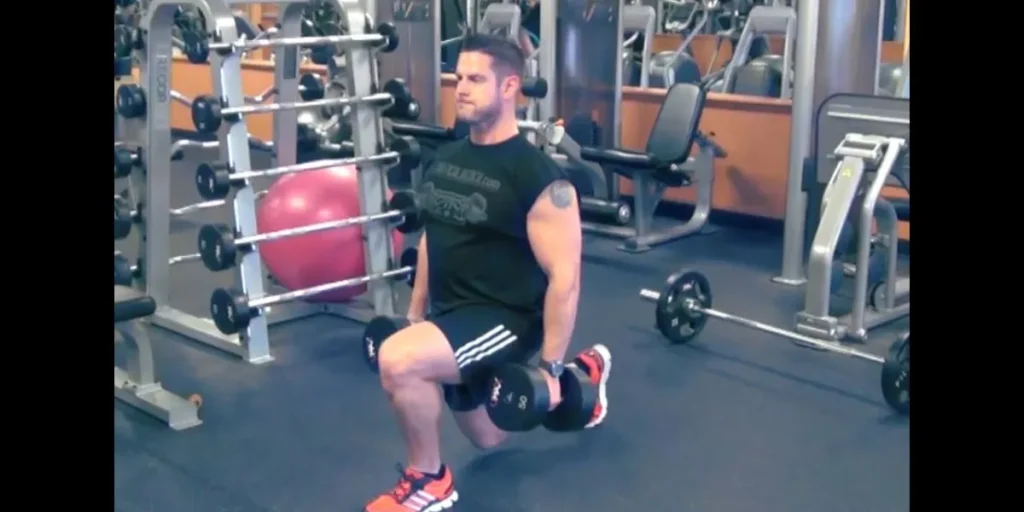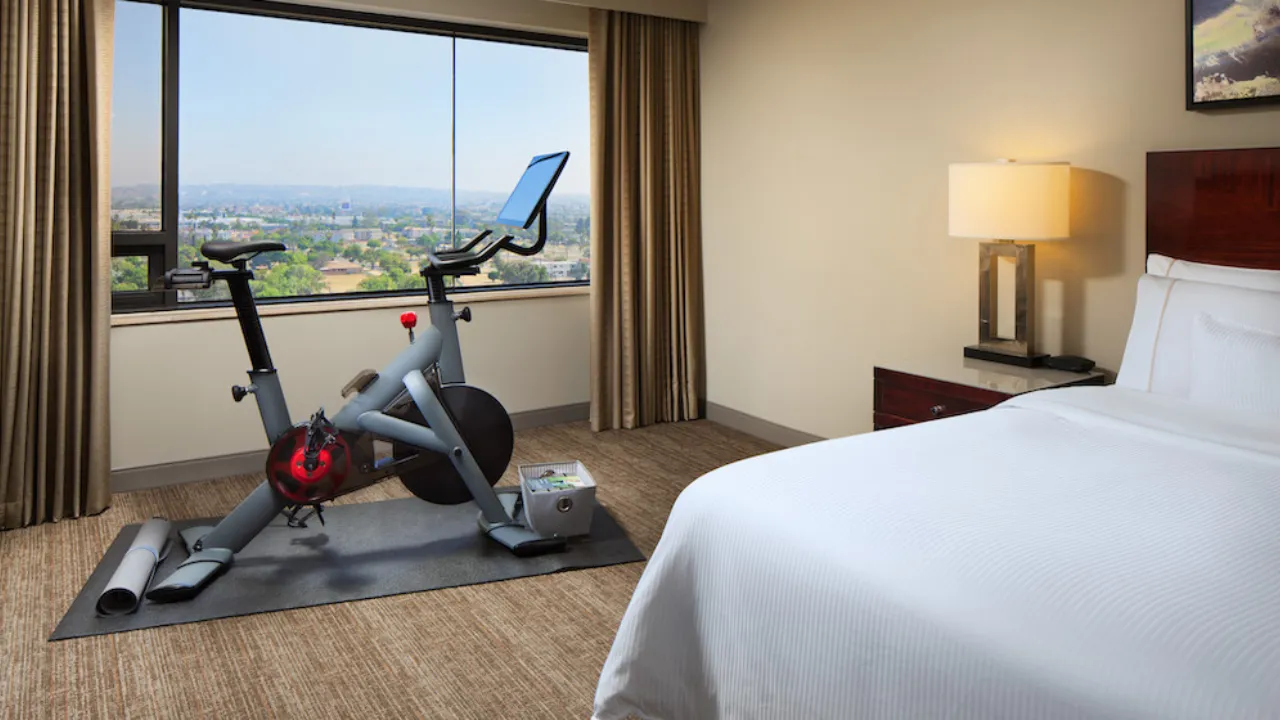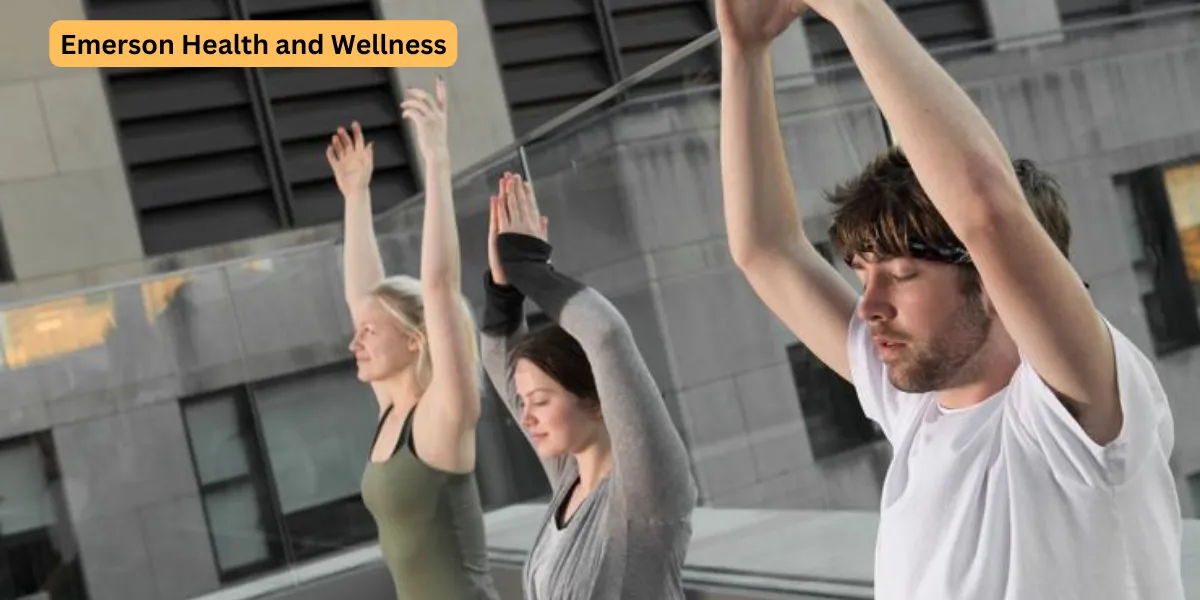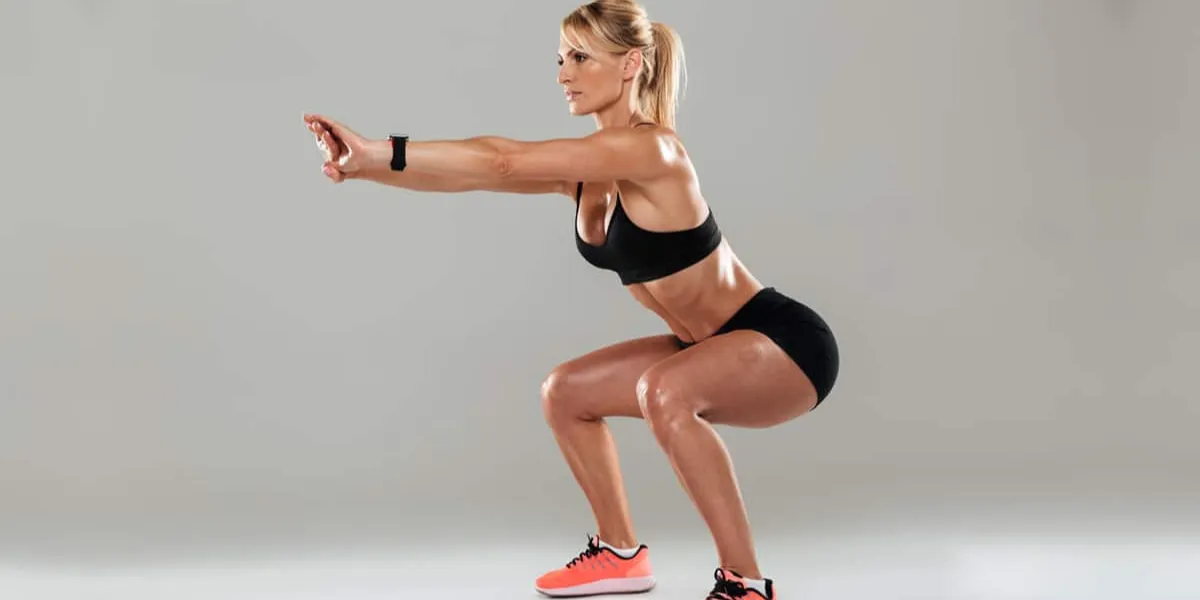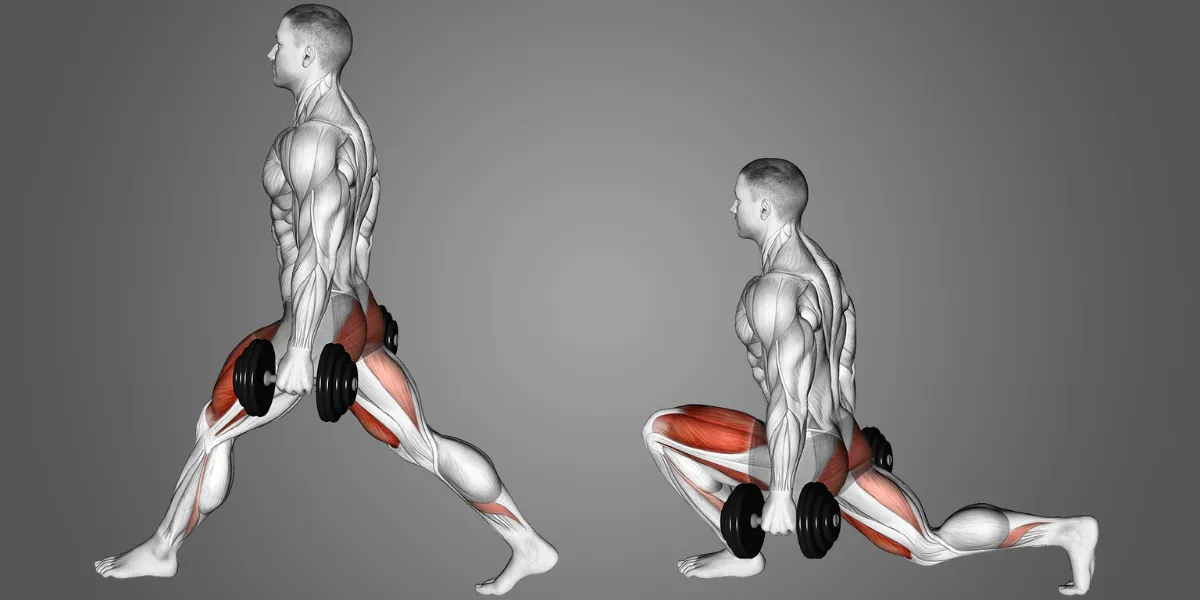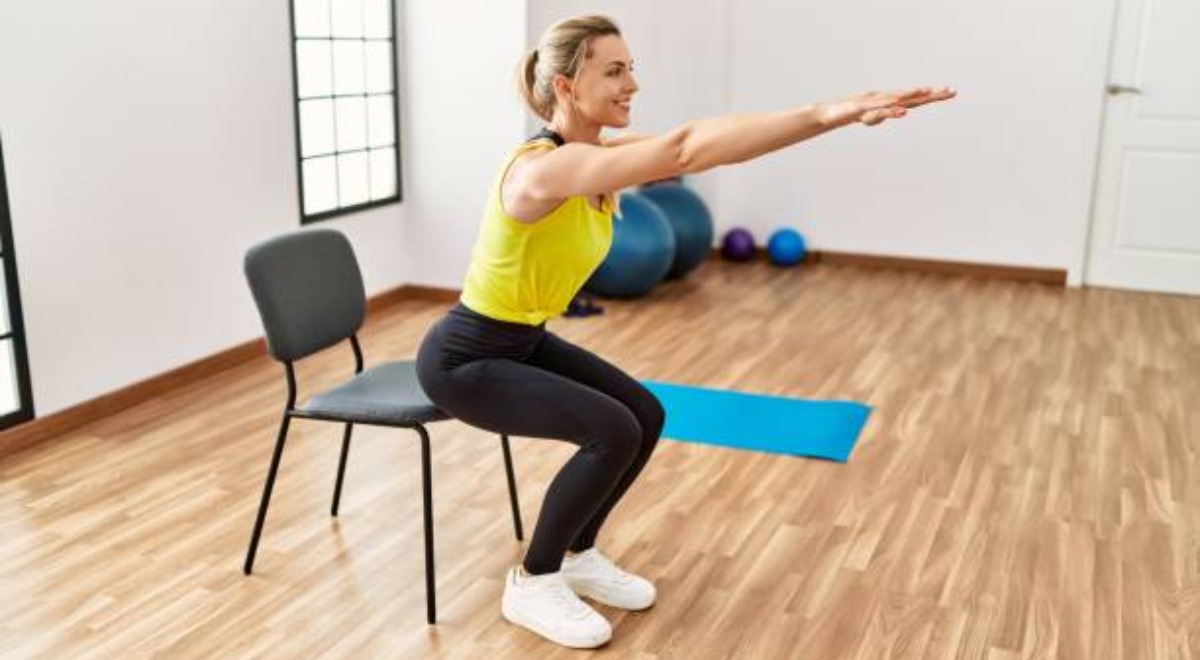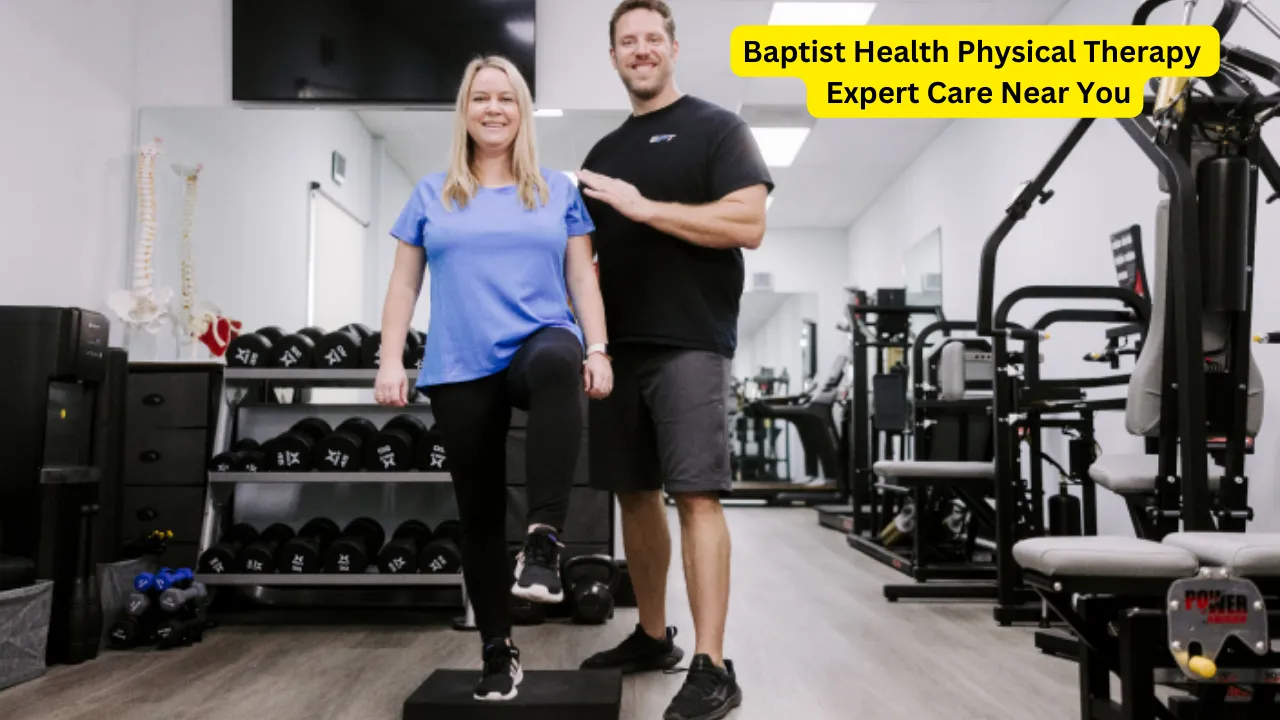The dumbbell Bulgarian split squat, also known as the single-leg dumbbell squat, is a powerful exercise that targets your lower body muscles. It’s a variation of the lunge exercise but with an added challenge: one leg elevated on a bench. This unilateral (single-sided) exercise works wonders for building strength, and stability, and improving balance.
This article dives deep into the dumbbell Bulgarian split squat, unpacking its benefits, proper form with step-by-step instructions, variations, common mistakes to avoid, and incorporating it into your workout routine.
Table of Contents
ToggleWhy Include Dumbbell Bulgarian Split Squats in Your Workout?
The dumbbell Bulgarian split squat offers a multitude of benefits for both beginners and seasoned gym-goers:
- Targets Major Lower Body Muscles: This exercise primarily hits your quads (quadriceps), hamstrings, and glutes (gluteus maximus). It also engages your core muscles for stability throughout the movement.
- Improves Balance and Stability: By working on one leg at a time, the Bulgarian split squat challenges your balance and core stability. This translates to better coordination and overall athletic performance.
- Strengthens Legs Unevenly: Everyone has a dominant leg. This exercise helps identify and address any imbalances in leg strength, leading to more symmetrical development.
- Low Impact on Knees: Compared to squats, the Bulgarian split squat puts less stress on your knees, making it a good option for those with knee pain or injuries (when performed with proper form).
- Improves Flexibility: The deep lunge motion of the Bulgarian split squat helps improve flexibility in your hips, ankles, and knees.
- Functional Movement: This exercise mimics real-life movements like climbing stairs or lunging to pick something up.
Step-by-Step Guide to the Perfect Dumbbell Bulgarian Split Squat
Mastering the proper form is crucial to reap the benefits of the Bulgarian split squat and avoid injury. Here’s a breakdown of the exercise with step-by-step instructions:
Equipment:
- A pair of dumbbells (weight selection will be discussed later)
- A sturdy bench, chair, or platform (around knee height)
Instructions:
- Set Up: Stand tall with your feet hip-width apart and hold a dumbbell in each hand at your sides. Engage your core and maintain a neutral spine (straight back with a slight natural arch).
- Step Back: Take a large step backward with one leg, placing the top of your foot (toes curled over) on the bench behind you.
- Maintain Forward Lean: Keep your torso upright with a slight forward lean (chest slightly out but not hunched). Your front knee should be directly over your ankle.
- Lower Yourself: Begin to lower your body by bending both knees. Descend until your front thigh is nearly parallel to the ground and your back knee almost touches the floor.
- Push Through Heel: Drive through your front heel to press back up to the starting position. Maintain a controlled descent and powerful push-ups throughout the movement.
- Repeat and Switch Legs: Complete the desired number of repetitions with one leg, then switch legs and repeat on the other side.
Tips:
- Focus on Form Over Weight: It’s more important to prioritize proper form over using heavy weights. Start with lighter dumbbells and gradually increase the weight as you get stronger.
- Control the Movement: Don’t let the weight pull you down. Maintain control throughout the descent and ascent.
- Keep Your Core Engaged: Tighten your core muscles throughout the exercise to maintain stability and protect your lower back.
- Look Forward: Pick a spot in front of you and focus your gaze there to maintain balance.
Variations of the Dumbbell Bulgarian Split Squat
As you gain strength and confidence with the basic Bulgarian split squat, you can explore variations to target different muscles or increase the difficulty:
- Bulgarian Split Squat with Goblet Hold: Hold a single dumbbell in front of your chest for a greater core challenge.
- Bulgarian Split Squat with Bulgarian Bag: Use a Bulgarian bag (a weighted sandbag) instead of dumbbells for an unstable surface, further engaging your core.
- Bulgarian Split Squat with Pause: Briefly pause at the bottom of the movement when your front thigh is parallel to the ground for an added challenge.
- Bulgarian Split Squat with Bulgarian Split Squat Jump: Once you’ve mastered the basic movement, add an explosive jump at the top for a plyometric variation.
Choosing the Right Weight:
There’s no one-size-fits-all answer for weight selection. Here’s a general guideline:
- Beginners: Start with a weight that allows you to perform 12-15 repetitions with good form on each leg.
- Intermediate: Once you can comfortably perform 12-15 repetitions with good form, increase the weight by 2-5 pounds per dumbbell. Aim for a weight that challenges you in the last 2-3 repetitions of each set.
- Advanced: If you can perform 10-12 repetitions with good form, it’s time to increase the weight again. Advanced lifters can aim for a weight that challenges them throughout the entire set of 8-10 repetitions.
Remember: These are just recommendations. It’s important to listen to your body and choose a weight that feels challenging but manageable. You should never compromise form for heavier weights.
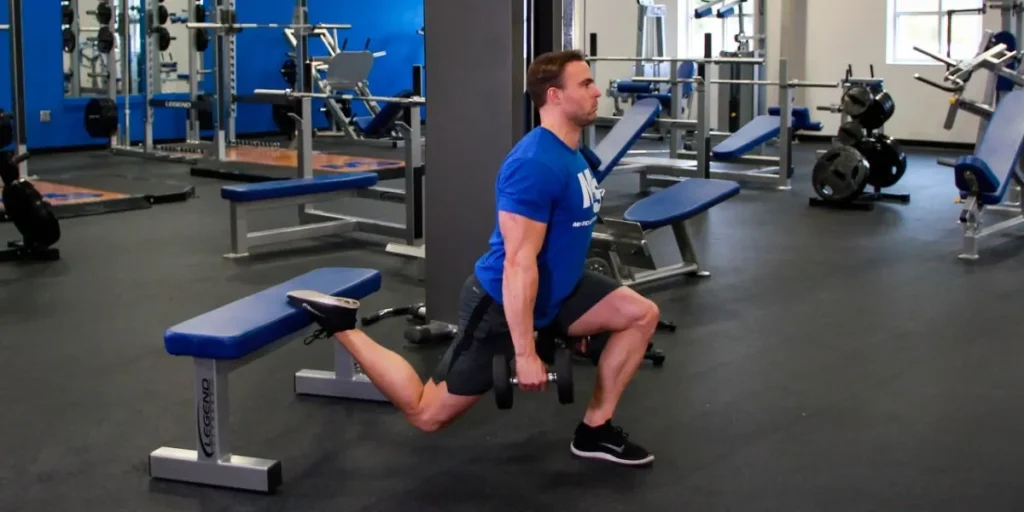
Common Mistakes to Avoid
Here are some common mistakes to be aware of when performing the Bulgarian split squat:
- Rounding Your Back: Maintain a neutral spine throughout the movement. Avoid hunching your back forward, as this can put a strain on your lower back.
- Letting Your Knee Cave In: Your front knee should track directly over your ankle during the descent. Avoid letting your knee cave inward, which can put stress on your knee joint.
- Not Descending Deep Enough: For optimal results, aim to get your front thigh nearly parallel to the ground during the squat.
- Using Too Much Weight: Prioritize proper form over heavy weights. Choose a weight that allows you to maintain control throughout the movement.
- Not Warming Up: Always perform a proper dynamic warm-up before your workout to prepare your muscles and joints for exercise.
Adding Bulgarian Split Squats to Your Workout Routine
The Bulgarian split squat is a versatile exercise that can be incorporated into various workout routines. Here are some ideas:
- Lower Body Strength Workout: Pair Bulgarian split squats with other lower body exercises like squats, lunges, and deadlifts for a complete leg workout.
- Full-Body Workout: Include Bulgarian split squats as part of a full-body routine that targets all major muscle groups.
- Strength and Conditioning Circuit: Combine Bulgarian split squats with other exercises like push-ups, rows, and burpees for a high-intensity workout.
Sets and Repetitions:
A typical recommendation for Bulgarian split squats is to perform 3 sets of 8-12 repetitions per leg. However, you can adjust the sets and reps based on your fitness level and training goals.
- For Beginners: Start with 2-3 sets of 10-15 repetitions per leg.
- For Intermediate Lifters: Aim for 3 sets of 8-12 repetitions per leg.
- For Advanced Lifters: You can perform 3-4 sets of 6-10 repetitions per leg or explore more challenging variations like jump squats.
Rest Periods:
Allow yourself enough rest between sets to recover and maintain good form. Aim for 30-60 seconds of rest between sets.
Bulgarian Split Squat FAQs
What is a Bulgarian split squat?
A Bulgarian split squat, also called a single-leg dumbbell squat or rear-foot elevated split squat, is a unilateral exercise that targets your lower body muscles, particularly your quads, hamstrings, and glutes. It’s performed with one leg elevated on a bench while squatting down on the other leg.
How do I do a Bulgarian split squat?
Here’s a quick breakdown:
- Hold dumbbells in each hand.
- Stand with feet hip-width apart and step back with one leg, placing your foot on a bench behind you.
- Lower your body by bending both knees until your front thigh is nearly parallel to the ground.
- Push through your front heel to return to the starting position.
- Repeat on the other leg.
What are the benefits of Bulgarian split squats?
Bulgarian split squats offer a variety of benefits, including:
- Building lower body strength
- Improving balance and stability
- Strengthening legs unevenly
- Reducing stress on knees compared to regular squats
- Enhancing flexibility
Can I do Bulgarian split squats with dumbbells for glutes?
Absolutely! Bulgarian split squats are a great exercise for targeting your glutes. To emphasize glute activation, ensure your front knee tracks directly over your ankle during the squat and avoid excessive forward lean.
How many sets and reps should I perform?
A good starting point is 3 sets of 8-12 repetitions per leg. You can adjust sets and reps based on your fitness level and goals. Beginners can start with lighter weights and higher reps, while advanced lifters can use heavier weights and lower reps.
Where can I find a Bulgarian split squat tutorial?
Many online resources offer Bulgarian split squat tutorials with video demonstrations. You can search for “dumbbell Bulgarian split squat tutorial” or “how to do a Bulgarian split squat” to find detailed instructions.
Is the Bulgarian split squat the same as a regular split squat?
No, there’s a slight difference. A regular split squat is performed with both feet on the ground, lunging forward with one leg. The Bulgarian split squat elevates the back leg on a bench, making it a more challenging single-leg variation.
Conclusion
The dumbbell Bulgarian split squat is a valuable exercise for building lower body strength, improving balance, and enhancing overall athletic performance. By incorporating it into your workout routine with proper form and progressive overload, you’ll see significant improvements in your lower body strength and stability. Remember to start light, prioritize form, and listen to your body to reap the benefits of this exercise and avoid injuries.

